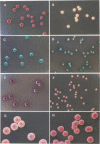Abstract
CHROMagar Candida is a novel, differential culture medium that is claimed to facilitate the isolation and presumptive identification of some clinically important yeast species. We evaluated the use of this medium with 726 yeast isolates, including 82 isolated directly on the medium from clinical material. After 2 days of incubation at 37 degrees C, 285 C. albicans isolates gave distinctive green colonies that were not seen with any of 441 other yeast isolates representing 21 different species. A total of 54 C. tropicalis isolates also developed distinctive dark blue-gray colonies with a halo of dark brownish purple in the surrounding agar. C. krusei isolates (n = 43) also formed highly characteristic rough, spreading colonies with pale pink centers and a white edge that was otherwise encountered only rarely with isolates of C. norvegensis. Trichosporon spp. (n = 34) formed small, pale colonies that became larger and characteristically rough with prolonged incubation. Most of the other 310 yeasts studied formed colonies with a color that ranged from white to pink to purple with a brownish tint. The only exceptions were found among isolates identified as Geotrichum sp. or Pichia sp., some of which formed colonies with a gray to blue color and which in two instances formed a green pigment or a dark halo in the agar. The specificity and sensitivity of the new medium for the presumptive identification of C. albicans, C. krusei, and C. tropicalis exceeded 99% for all three species. A blinded reading test involving four personnel and 57 yeast isolates representing nine clinically important species confirmed that colonial appearance after 48 h of incubation on CHROMagar Candida afforded the correct presumptive recognition of C. albicans, C. tropicalis, C, krusei, and Trichosporon spp. None of nine bacterial isolates grew on CHROMagar Candida within 72 h, and bacteria (Escherichia coli) grew from only 4 of 104 vaginal, 100 oral, and 99 anorectal swabs. The new medium supported the growth of 19 of 23 dermatophyte fungi tested and 41 of 43 other molds representing a broad range of fungal pathogens and contaminants. In parallel cultures of 348 clinical specimens set up on Sabourand agar and CHROMagar Candida, both media grew yeasts in the same 78 instances. CHROMagar Candida is recommended as a useful isolation medium capable of the presumptive identification of the yeast species most commonly isolated from clinical material and facilitating recognition of mixed yeast cultures.
Full text
PDF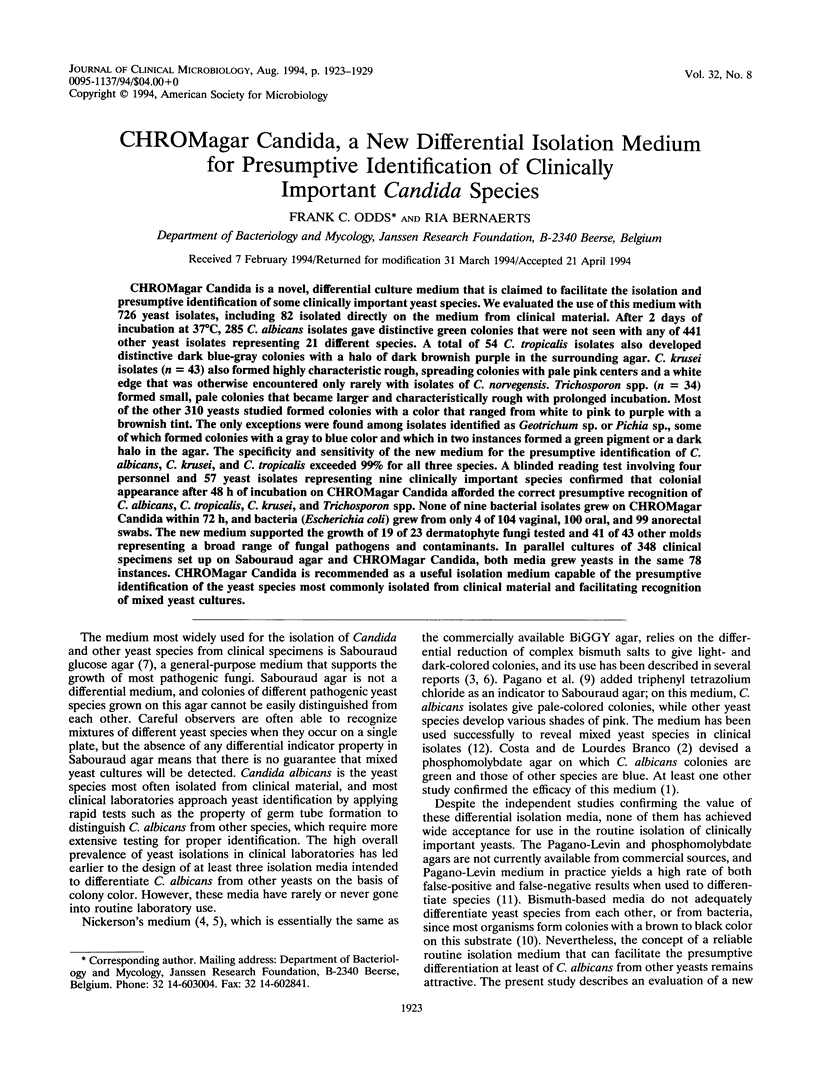

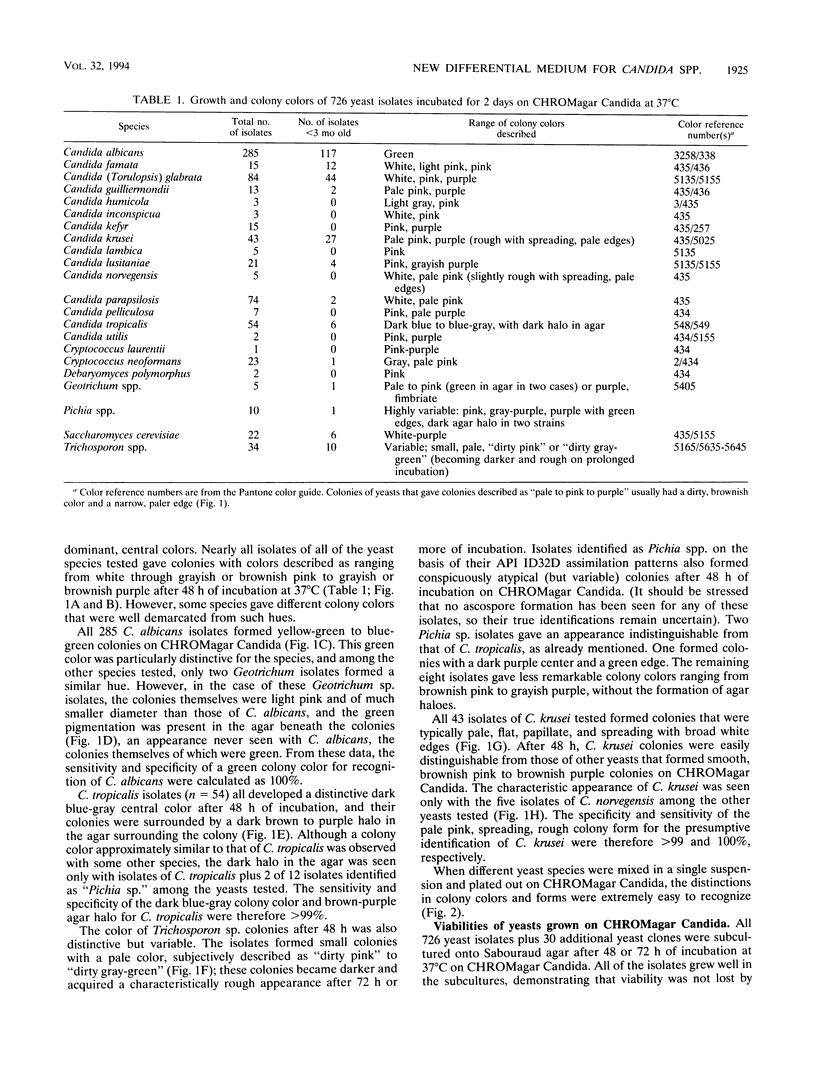
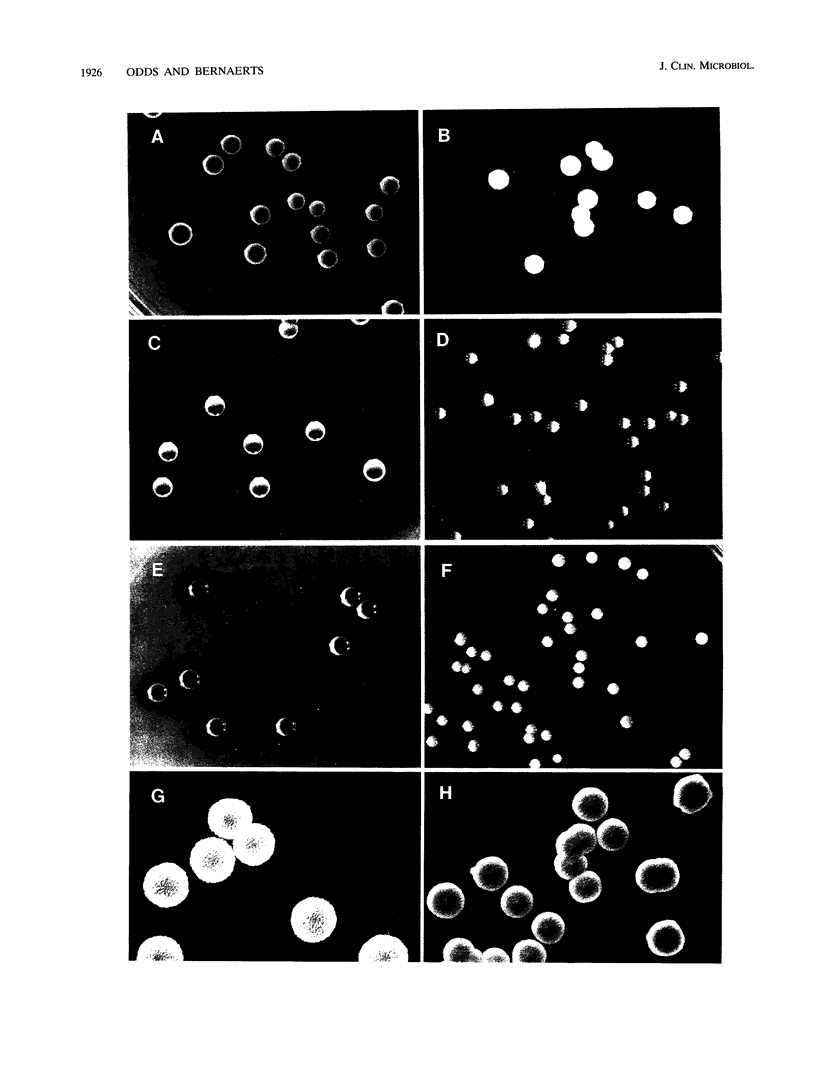


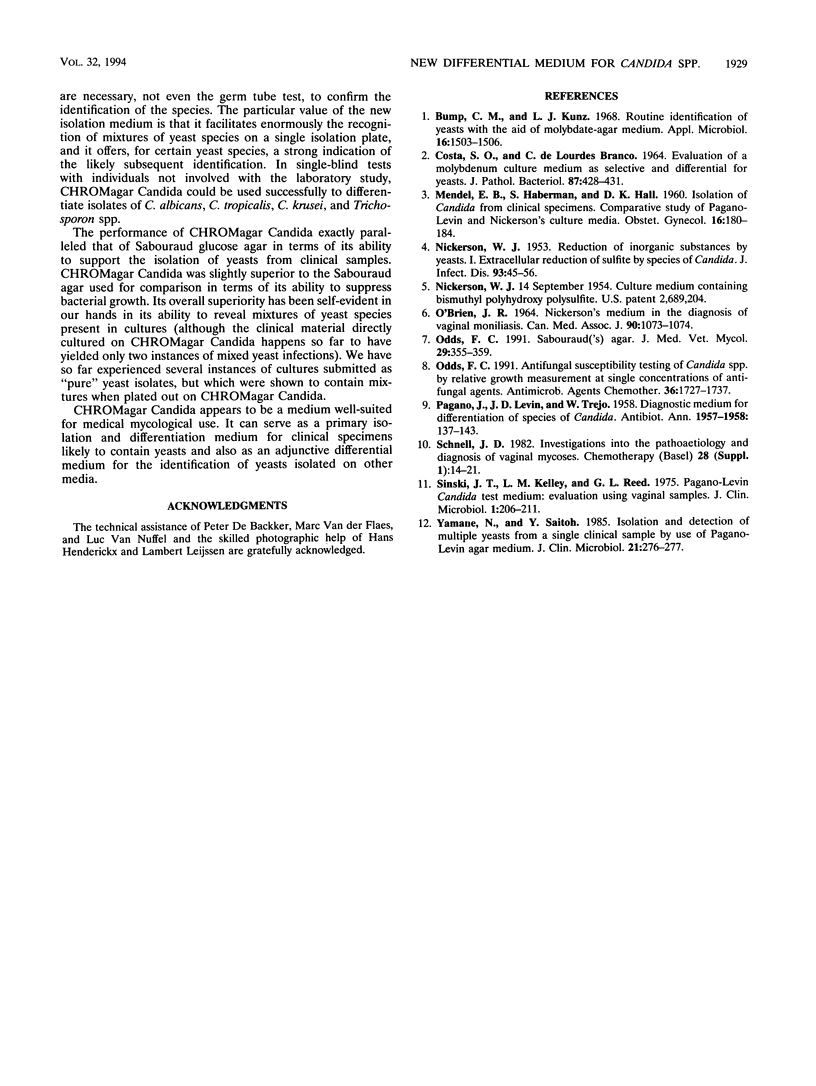
Images in this article
Selected References
These references are in PubMed. This may not be the complete list of references from this article.
- Bump C. M., Kunz L. J. Routine identification of yeasts with the aid of molybdate-agar medium. Appl Microbiol. 1968 Oct;16(10):1503–1506. doi: 10.1128/am.16.10.1503-1506.1968. [DOI] [PMC free article] [PubMed] [Google Scholar]
- COSTA S. O., BRANCOCDE L. EVALUATION OF A MOLYBDENUM CULTURE MEDIUM AS SELECTIVE AND DIFFERENTIAL FOR YEASTS. J Pathol Bacteriol. 1964 Apr;87:428–431. doi: 10.1002/path.1700870226. [DOI] [PubMed] [Google Scholar]
- NICKERSON W. J. Reduction of inorganic substances by yeasts. I. Extracellular reduction of sulfite by species of Candida. J Infect Dis. 1953 Jul-Aug;93(1):43–56. doi: 10.1093/infdis/93.1.43. [DOI] [PubMed] [Google Scholar]
- O'BRIEN J. R. NICKERSON'S MEDIUM IN THE DIAGNOSIS OF VAGINAL MONILIASIS. Can Med Assoc J. 1964 May 2;90:1073–1074. [PMC free article] [PubMed] [Google Scholar]
- Odds F. C. Antifungal susceptibility testing of Candida spp. by relative growth measurement at single concentrations of antifungal agents. Antimicrob Agents Chemother. 1992 Aug;36(8):1727–1737. doi: 10.1128/aac.36.8.1727. [DOI] [PMC free article] [PubMed] [Google Scholar]
- Odds F. C. Sabouraud('s) agar. J Med Vet Mycol. 1991;29(6):355–359. doi: 10.1080/02681219180000581. [DOI] [PubMed] [Google Scholar]
- PAGANO J., LEVIN J. D., TREJO W. Diagnostic medium for differentiation of species of Candida. Antibiot Annu. 1957;5:137–143. [PubMed] [Google Scholar]
- Schnell J. D. Investigations into the pathoaetiology and diagnosis of vaginal mycoses. Chemotherapy. 1982;28 (Suppl 1):14–21. doi: 10.1159/000238147. [DOI] [PubMed] [Google Scholar]
- Sinski J. T., Kelley L. M., Reed G. L. Pagano-Levin Candida test medium: evaluation using vaginal samples. J Clin Microbiol. 1975 Feb;1(2):206–211. doi: 10.1128/jcm.1.2.206-211.1975. [DOI] [PMC free article] [PubMed] [Google Scholar]
- Yamane N., Saitoh Y. Isolation and detection of multiple yeasts from a single clinical sample by use of Pagano-Levin agar medium. J Clin Microbiol. 1985 Feb;21(2):276–277. doi: 10.1128/jcm.21.2.276-277.1985. [DOI] [PMC free article] [PubMed] [Google Scholar]



